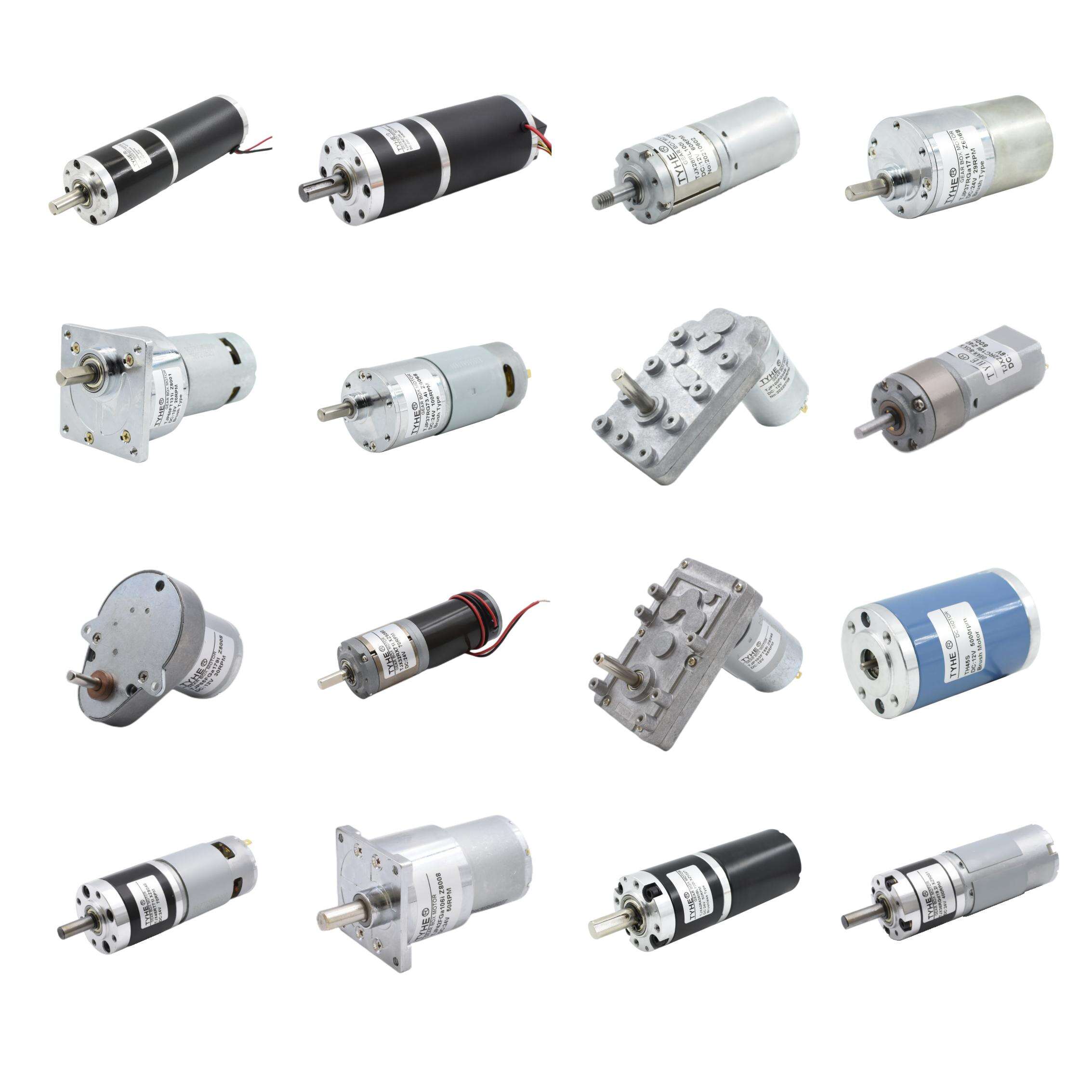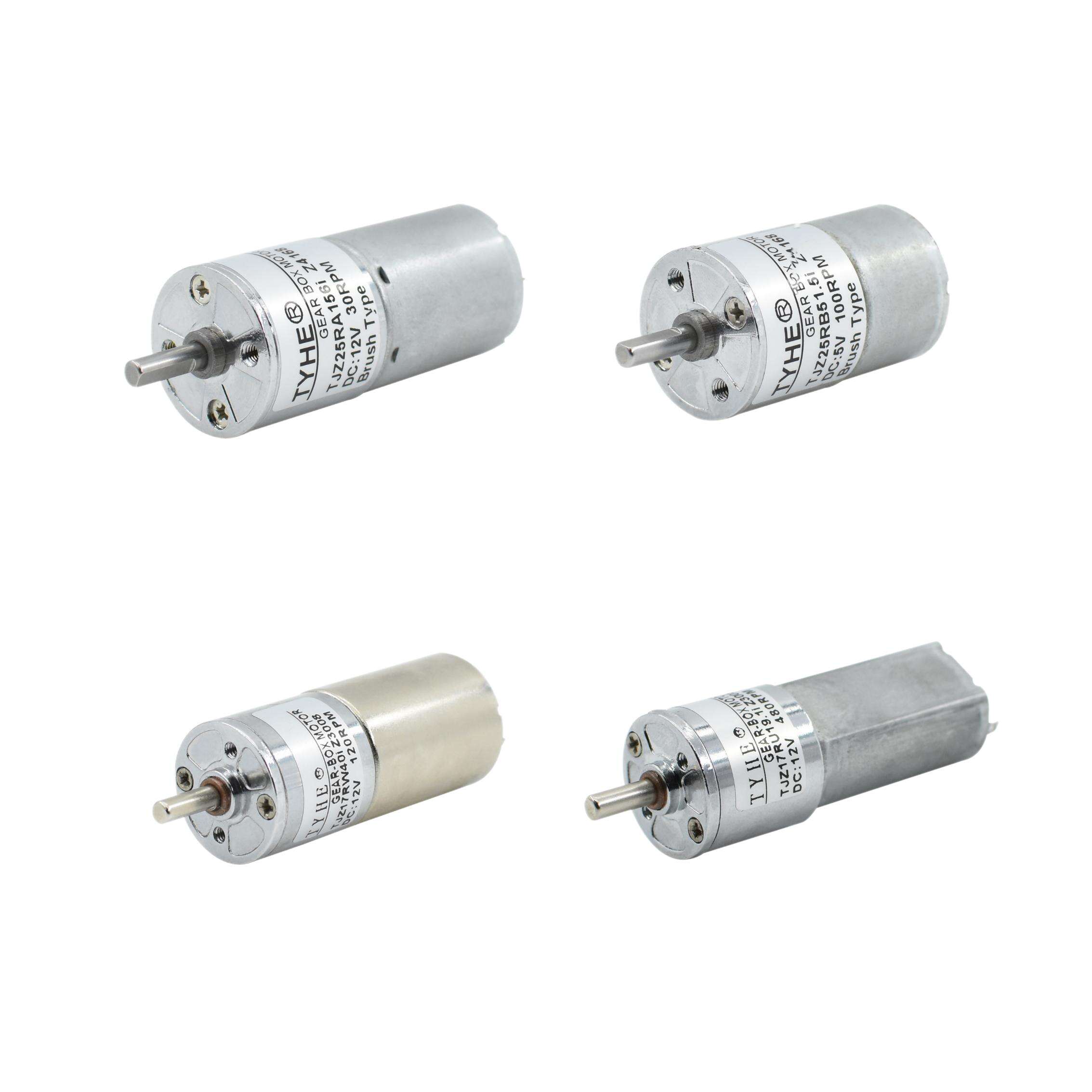How to Choose the Right DC Motor for Your Application
A DC Motor is one of the most versatile and widely used types of electric motors, found in applications ranging from electric vehicles and industrial machines to robotics and home appliances. Its ability to provide high starting torque, precise speed control, and smooth operation makes it an attractive choice for engineers and designers.
However, choosing the right DC Motor for a particular application requires careful consideration of multiple factors, including performance requirements, environmental conditions, control methods, and cost constraints. Selecting the wrong motor can lead to inefficiency, poor performance, or premature failure, while the right choice ensures optimal functionality, reliability, and cost-effectiveness.
This guide covers everything you need to know about selecting a DC Motor for your application — from understanding motor types and specifications to evaluating operating conditions and integrating the motor into your system.
Understanding the Types of DC Motors
Before you can choose the right motor, it’s important to understand the different types of DC Motors and how their characteristics match different applications.
Brushed DC Motor
Operation: Uses brushes and a commutator to switch current in the armature windings.
Advantages: Simple design, low cost, easy speed control.
Disadvantages: Requires periodic maintenance due to brush wear.
Applications: Toys, simple machinery, low-cost automation.
Brushless DC Motor (BLDC)
Operation: Uses electronic commutation instead of brushes.
Advantages: Higher efficiency, longer lifespan, less maintenance.
Disadvantages: Requires an electronic controller, higher initial cost.
Applications: Electric vehicles, drones, industrial automation, high-performance fans.
Coreless DC Motor
Operation: Armature is wound without an iron core, reducing weight and inertia.
Advantages: Very fast response, low inertia, high efficiency at small sizes.
Disadvantages: Typically more expensive, not suitable for high-load applications.
Applications: Precision instruments, medical devices, robotics.

Key Parameters to Consider
Choosing the right DC Motor involves evaluating the specifications that determine how the motor will perform under your application’s conditions.
1. Voltage Rating
The voltage rating determines the electrical supply the motor can handle. It’s important to match the motor voltage with your power source to ensure optimal performance and avoid overheating or underperformance.
2. Current Rating
The current draw under load indicates how much electrical power the motor will require. Exceeding the rated current can cause overheating and damage.
3. Power Output
Measured in watts or horsepower, power output determines how much work the motor can perform. This should match the mechanical load requirements of your application.
4. Speed (RPM)
Motor speed is a critical factor for applications like conveyors, fans, or precision positioning systems. Consider whether the application needs high speed, low speed, or variable speed operation.
5. Torque
Torque measures the rotational force the motor can generate. High-torque motors are required for applications with heavy loads or high starting resistance.
6. Duty Cycle
The duty cycle describes how long the motor can run continuously before it must rest to prevent overheating. Applications that run continuously require motors rated for continuous duty.
Matching the Motor to the Application
For High Starting Torque Needs
A series-wound brushed DC Motor or a brushless motor with appropriate gearing is ideal for applications like cranes, hoists, or electric vehicles.
For Precise Speed Control
A shunt-wound brushed DC Motor or a BLDC motor with an electronic controller works well for conveyor systems, robotics, and laboratory equipment.
For Continuous Operation
Choose a motor designed for continuous duty, with adequate cooling systems to handle sustained operation without overheating.
For Space-Constrained Designs
A coreless DC Motor or compact BLDC motor is suitable for applications like medical devices, small drones, or camera systems.
Environmental Considerations
The working environment significantly impacts motor selection.
Temperature: Motors designed for high-temperature environments will have better insulation and cooling capabilities.
Humidity and Moisture: Sealed or IP-rated motors are essential for damp or wet environments.
Dust and Particulates: Enclosed or dust-proof motors are necessary in dusty industrial environments.
Vibration and Shock: Motors with reinforced housings and bearings perform better in heavy machinery or mobile applications.
Power Supply Compatibility
Ensure the motor matches your available power source:
Battery-powered applications benefit from low-voltage DC Motors with high efficiency.
Systems connected to the AC grid will require a rectifier or DC power supply for DC Motors.
Motor Control Options
Different control strategies can greatly affect performance:
Variable Voltage Control: Adjusting voltage changes speed directly.
Pulse Width Modulation (PWM): Offers efficient and precise speed control.
Feedback Control Systems: Use encoders or tachometers for closed-loop control in applications requiring precision.
Cost vs. Performance Trade-offs
While it may be tempting to choose the most powerful or advanced motor, it’s essential to balance cost with actual performance needs. Overspecifying a DC Motor can lead to unnecessary expense, while underspecifying can cause operational failures.
Steps for Selecting the Right DC Motor
-
Define the Application Requirements
Load type and weight
Desired speed and torque
Duty cycle and operational duration
-
Assess Environmental Conditions
Temperature range
Humidity, dust, and exposure to contaminants
-
Determine Power Source and Voltage
Battery or DC power supply
Voltage availability and stability
-
Calculate Required Motor Size
Use load equations to determine torque and power needs.
-
Select Motor Type
Brushed, brushless, or coreless based on application priorities.
-
Evaluate Control Options
Choose a compatible controller for speed and torque regulation.
-
Consider Maintenance and Lifespan
Select a motor with an expected service life and maintenance schedule that fits your operational needs.
-
Test and Validate
Conduct trials to ensure the chosen DC Motor performs under real-world conditions before full deployment.
Common Mistakes in DC Motor Selection
Ignoring load inertia, which can lead to undersized motors.
Choosing the wrong type of DC Motor for the duty cycle.
Failing to account for peak load requirements.
Overlooking environmental protection ratings.
Not considering long-term maintenance costs.
Conclusion
Choosing the right DC Motor for your application involves more than matching power and speed ratings — it requires a careful evaluation of load demands, environmental factors, control requirements, and cost constraints. By understanding the different types of DC Motors, analyzing performance specifications, and considering operational conditions, you can select a motor that offers reliability, efficiency, and long-term value.
FAQ
How do I know what size DC Motor I need?
Calculate the torque and speed requirements for your load, then match them to a motor’s rated performance specifications.
Which type of DC Motor is best for robotics?
Brushless DC Motors are often preferred for robotics due to their efficiency, low maintenance, and precise control.
Can I use a DC Motor continuously?
Yes, but you must select a motor rated for continuous duty to prevent overheating.
How important is the voltage rating?
Very important — using the wrong voltage can damage the motor or cause inefficient performance.
Is a brushless DC Motor always better than a brushed one?
Not necessarily — while brushless motors offer longer life and lower maintenance, brushed motors can be more cost-effective for simple, low-duty applications.
Table of Contents
- How to Choose the Right DC Motor for Your Application
- Understanding the Types of DC Motors
- Key Parameters to Consider
- Matching the Motor to the Application
- Environmental Considerations
- Power Supply Compatibility
- Motor Control Options
- Cost vs. Performance Trade-offs
- Steps for Selecting the Right DC Motor
- Common Mistakes in DC Motor Selection
- Conclusion
- FAQ


